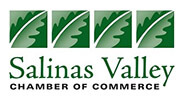
Instilling Financial Basics with Children
It’s never too early.
Financial literacy is more important than ever. A recent study by Bank of America found that about 40% of older teens and young adults, comprising Gen Z still rely on family for financial support, realizing just how expensive becoming an adult can be today.
Studies also show that instilling financial basics at younger ages can pay greater dividends for future money habits.
Yet, most schools have only just begun to add basic financial know-how to their course curricula. Here in California, students will be required to take a semester-long personal finance course to graduate from high school – but that doesn’t go into effect until the class of 2030-31.
In the meantime, parents and educators continue to look for resources that introduce financial education that will resonate with young minds. We believe that fostering financial literacy at an early age, with age-appropriate information, is key to building the next generation of financially responsible individuals.
Here are a few tips for introducing financial concepts to children to set them up for a lifetime of informed, confident decision-making.
Start Early at Home
One of the best ways to ensure children develop strong financial habits is to introduce basic concepts of money and budgeting as early as possible. Even at a young age, kids can begin to understand simple ideas like the value of saving versus spending. Begin by explaining where money comes from, why we need it, and how it can be exchanged. Using age-appropriate language, such as talking about "saving for something special" or explaining how "buying today means you can't buy other things until you have more money," can make these concepts relatable.
Incorporate Financial Education Gradually into Everyday Life and Lead by Example
The best way to teach kids about money is by incorporating financial lessons gradually into everyday activities. Situations—like shopping for their favorite grocery items, setting a budget for a family outing, or even saving for a toy—offer perfect opportunities to discuss money. Teaching your child with a hands-on approach during real-life events offers them a practical understanding without the need for formal lessons.
Utilize Community Resources and Programs
Fortunately, there are a variety of free financial know-how programs designed for people of all ages. For example, Bank of America’s Better Money Habits content is not only provided free on its website, but is also taught by a team of more than 100 of its bankers in San Diego in partnership with local schools, universities and nonprofits. Bank of America also partners with local nonprofits such as Junior Achievement that provides school-age financial education in classrooms.
Another helpful source may be your own bank. More and more financial institutions are supporting the entire family with household financial services. One example is Bank of America’s new SafeBalance Banking® for Family Banking, a bank account that offers parents the ability to help their children practice healthy financial habits and learn to manage their money through a convenient, secure digital experience. Parents are able to maintain oversight of their child’s spending, supervise the account, and even teach them the responsibility of managing a physical debit card.
Financial basics are a vital skill that can set children up for a successful future. By working together - families, educators, and community partners can prioritize financial education and help children build the foundation they need for a lifetime of smart financial decisions.
Bank of America Monterey Bay offers free financial education workshops in the tri-county area. To inquire or schedule one at your organization or school, contact Lupe Soria at guadalupe.soria@bofa.com.
###
Images



